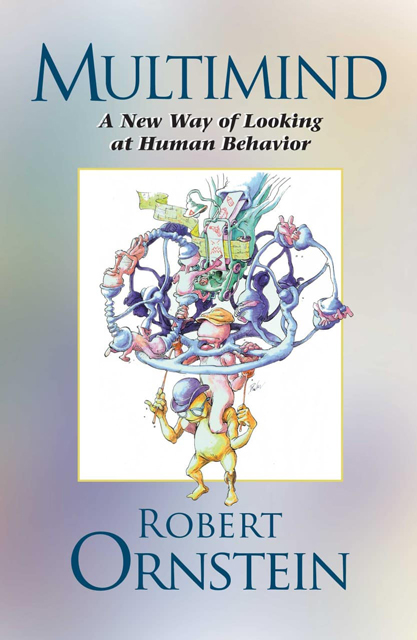
Our Subpersonalities and Many-Sided Selves
John Zada | May 28, 2025
As a journalist, I worked for over a decade in television newsrooms, both at home and abroad. Although I was exposed to some strange and often underreported stories from around the world, some of the oddest and more interesting observations came from within the newsroom itself. Those comprised the many workplace behaviors that my colleagues exhibited, including the strange idiosyncrasies specific to broadcast news culture.
One of them, deceptively minor, involved what I can only describe as sudden “personality shifts” that occurred in certain co-workers who juggled multiple roles. One broadcaster I worked for in Canada was chronically understaffed because of accumulated vacation time and frequent sick calls tied to burnout. So, many of us filled in on crucial jobs that weren’t our regular tasks when certain staff were absent.
Writers would sometimes moonlight as producers; a lower-nomenclature producer would become a more senior one, performing different tasks and assuming a higher position in the hierarchical structure of the news production line. These changes involved assuming another level of authority and sometimes liaising with different people in the organization. It was both a literal and figurative exercise in musical chairs, in which you would take the very seat and desk of the person you were replacing in that moment.
One young colleague, we’ll call him “Calvin,” who as it turned out had a big future at the TV news station as a presenter, and who filled in for everyone up the newsroom chain, took on an especially wide variety of roles—including summer stints working as a young reporter in small town beats. What I noticed with Calvin, and others, was that with each different job role he took, he looked, sounded and behaved like a different person—assuming unusual airs, using different body language and even holding slightly different opinions. The shift, though subtle, was discernible enough to come off as a change of personality. Each task, or role, Calvin assumed, it seemed, came with its own slightly different persona.
At first, I found this puzzling and sometimes troubling, as some of these people were also friends whose behavior towards me would inexplicably shift in the moment. But I eventually developed a thick skin (as one must in the stressful TV news factory environment), and chalked it up to hierarchal adaptation. After all, a change in context will often alter, even if only slightly, everything in connection with it.
It was a few more years until I finally had a better grasp of what I was witnessing. I had picked up a book around that time entitled Multimind: A New Way of Looking at Human Behavior, a fascinating work of psychology by the late brain scientist, Robert Ornstein. In it he argues that contrary to what we think, we are not consistent and stable-minded individuals with one outlook and approach to the world. We are in fact a collection of many different “small minds” and subpersonalities suited to different tasks and scenarios that wheel in and out of our consciousness depending on circumstances. These individual small minds are composed of different qualities: our varying behaviors, talents, perspectives, temperaments, reactions, memories, tendencies, mental resources and experiences.
Part of the reason we operate this way, Ornstein tells us, stems from the makeup of the human brain. It is composed of very separate structures that seem to have been laid on top of each other across its more than 500 million years of evolution—“like a house being remodeled,” he says. “So we do not have one single brain but a multilevel brain,” he goes on, “built in different eras for different priorities. Many of these separate brains have, loosely speaking, ‘minds of their own.’”
Ornstein’s book explains a lot, including why all of us can express contradictory opinions as well as exhibit unusual behaviors that are surprising, unexpected and seem to run contrary to our natures (which we and others might attribute to changes in “mood”). It’s why we often show different versions of ourselves to different people, including family, friends, colleagues, and employers. “I wasn’t myself” or “I wasn’t in my right mind” are well-worn expressions born of this little-known state of mental affairs. It also explains those personality changes at the news station, and how Calvin could embody so many different minor personas.
“That we are consistent and single-minded is a built-in delusion,” Ornstein writes.
Though Ornstein was the first to really flesh this out scientifically, the idea of multiple selves or personalities is an old one that was common in many past cultures.
Deities and pantheons of gods in ancient times, such as those of the Indians and Greeks, are believed by some to have deliberately symbolized different aspects of our minds and thinking. In the medieval Christian and Islamic periods, demonic takeover and spiritual possession by jinn explained more extreme multimind shifts in the psychologically unwell. Meanwhile, in some Eastern self-developmental systems, such as that of the Sufis, true psychological stabilization involved identifying and unifying those competing and ever-shifting personas.
These same older ideas came to influence psychologists Carl Gustav Jung, Roberto Assagioli and William James, who all mentioned subpersonalities in their work. The latter once wrote that man “has as many different social selves as there are distinct groups of persons about whose opinions he cares… We do not show ourselves to our children as to our club companions, to our masters and employers as to our intimate friends.”
Even Thomas Sowell, the American economist, social theorist and political commentator, in his 2020 socio-political critique of America entitled Is Reality Optional? wrote: “Nobody is equal to anybody. Even the same man is not equal to himself on different days.”
So, what does all of this mean and why is it important?
First, digesting this knowledge is a necessary prerequisite and key to understanding ourselves. At one level, this means facing the unavoidable reality that we are all deeply inconsistent beings: from those we know so well including our close friends, family and colleagues, to those whom we think we know well—but often don’t—such as public figures and political leaders. Understanding this can potentially give us much greater agency. Though we may not be able to eliminate our many small minds, at least if we become more aware of them, both in ourselves and others, we might wield some semblance of control over them—and be less at their mercy.

Retired writer and Human Givens therapist Pat Williams suggests in her audio essay entitled, Which You are You? that we can become adept at identifying and naming our many small minds and swapping one for another when the wrong one is “on stage” making a mess of things (as can sometimes happen when, for instance, a small mind from the office is brought home after a bad day at work).
Ornstein writes in Multimind that if we became skilled at recognizing these subpersonalities, and their suitability and limitations, we could “be more able to respond to life as it really is, and not as we would reduce it to fit one small-minded view.”
John Zada is a writer and journalist based in Toronto, Canada. He is the author of the books, In the Valleys of the Noble Beyond and Veils of Distortion.
Recent Blogs
- Style-Shifting: Why We Speak Differently Around Friends
- Can We Make More Accurate Predictions In Economics?
- Our Subpersonalities and Many-Sided Selves
- The Illusion of Predictability in Economics
- An Old Story About Metaphysics
- The Conditioning Machines in Our Back Pockets
- Out on a Limb: The Danger of our Innate Shortsightedness
- Edward T. Hall: Culture Below the Radar
- The Half Brain Method
- 'He Who Tastes Knows': Contemporary Sufi Studies and the work of Idries Shah
- "They Saw a Game"
- A Funny Thing Happened on the Way to Enlightenment
- Finding the Right Way Home
- Time and Self
- Escaping the Either/Or Thinking Trap
- Looking Up, Looking Out
- Conditioning and the Gendered Brain
- New World, Same Mind?
- One Small Word
- Meaning: The Enduring Gift to Spirit
- Beyond East and West: Human Nature and World Politics
- Forest Smarts: A Part of or Apart From?
- How to Improve Group Decision-Making
- We Know More Than We Think We Do
- How Deep Can a Story Go?
- Lost and Found: An Encounter with the Intuitive Mind
- The Devil’s Tuning Fork
- Welcome to The Human Journey Blog


